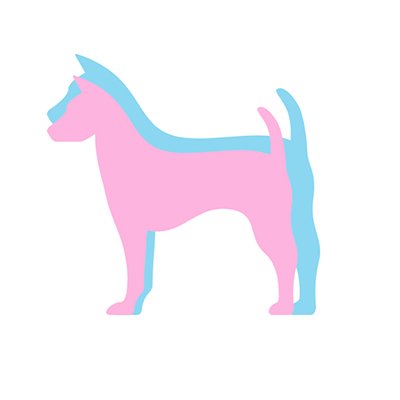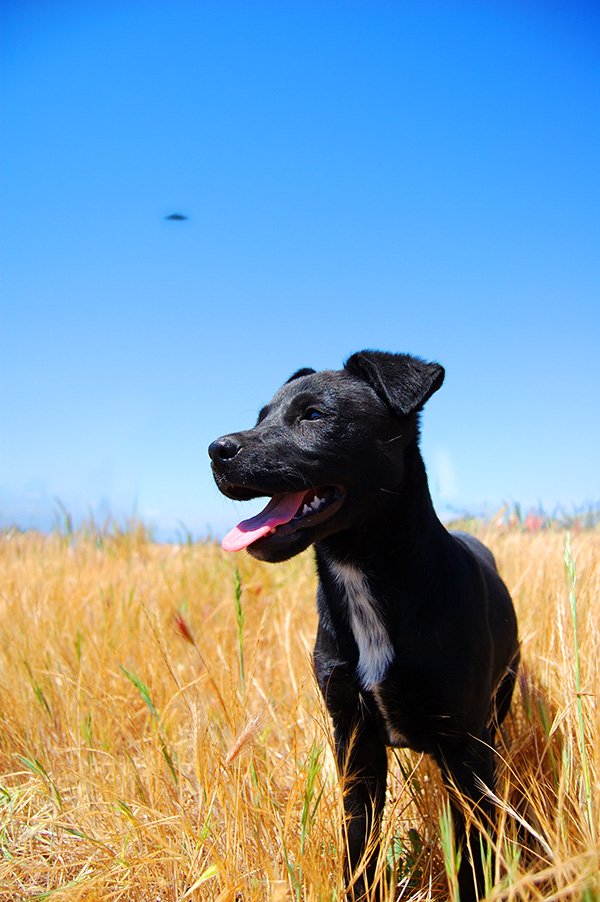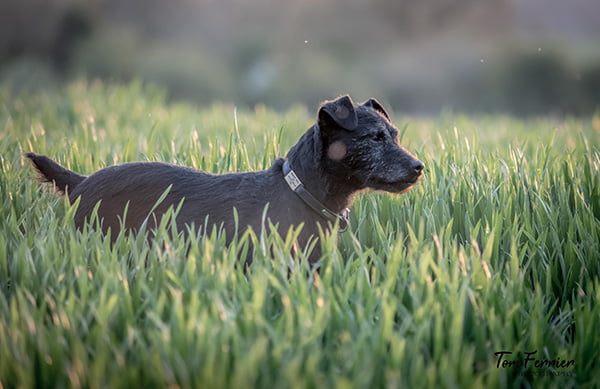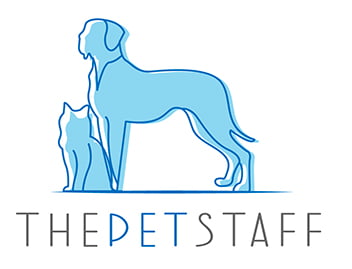Looking for a loving yet energetic canine pal to brighten up your life? The Patterdale terrier is a great choice for individuals or families with active lifestyles who need a tough, smart, and spunky dog companion to join in on the fun activities of everyday life.
As small dogs, Patterdale Terriers are easy to take along places, but with the stamina and energy to still be able to keep up. While not the best choice for first-time dog owners or individuals with dog allergies, these dogs make great pets for dog owners who have the time and patience to train these fun dogs and the space and time to play with them.
So is the Patterdale terrier the dog for you? Let's find out.
Breed Characteristics
Temperament | Energetic, Bold |
Intelligence | High |
Affection/Friendliness | Moderate |
Trainability | Moderate |
Mental Stimulation | High |
Exercise Needs | High |
Apartment Living | Can adapt |
Family Friendly | Yes |
Pet Friendly | Yes |
Drooling Level | Low |
Energy Level | High |
Loneliness Tolerance | Moderate |
Adaptability | Moderate |
Tendency to bark | High |
Origin of Patterdale Terriers
The Patterdale Terrier originated in northern England, where it was developed as a working terrier breed to hunt predators on sheep farms.
Patterdale terriers originated from black smooth-coated Fell terriers, the Northumberland pit terrier, and possibly other northern terrier breeds, with bodies small enough to fit inside burrows so that they could flush pests out. They were bred to hunt rabbits, foxes, and rats and are named after a village in the north of England.
Patterdale terriers are now considered purebred dogs by the United Kennel Club (UKC) and recognized by the Dog Registry of America and the Continental Kennel Club. United kennel club recognized the breed in 1995.

Breed Overview
Height: 10-15"
Weight: 11-13 lbs
Height: 10-15"
Weight: 11-13 lbs
Breed Group
Terrier
Life Span
10-12 years
Coat
Smooth
Coat Length
Short
Hypoallergenic
No
Shedding Level
Moderate
Size
Patterdale Terriers are small-breed dogs, usually topping out at about 10-15 inches high and 11-13 pounds in weight full grown. As there can be some variation in size, some individual dogs may grow to be larger or smaller, however. These sturdy little dogs have compact bodies, strong necks, and powerful jaws.
Personality
Patterdale terriers used to be popular for their work ethic, but they have become more popular for their winning personalities. These dogs love to please and are affectionate and gentle. They are also courageous, active, spunky, playful, and tough. They are the best of both worlds. These energetic dogs enjoy busy, active lives but know how to cuddle up and rest at the end of the day.

Source: Free Images
Appearance/Colors
As working terriers to hunt foxes, Patterdale terrier was bred for their strength and stamina. This also means there can be a significant variation in their appearance.
Patterdale terriers are typically small dogs that come in various colors, including pied, black, red, and brown. They can be solid or have white markings on the chest and paw area. They can have a smooth, rough, or broken coat (mixed), but they are usually always dense and coarse.
What makes them unique is this breed of dog has a wedge- or trapezoidal-shaped head, triangular ears that fold tightly just above the skull, and wide-set eyes.
Patterdale Terrier Temperament
Patterdales have many similarities to other types of terriers. They are confident, strong-willed, and lively. Some will even say they can be stubborn at times, making them more challenging to train.
As affectionate and loyal dogs, Patterdale terriers form strong bonds with their people making them great family dogs. They also love attention and activity, making them ideal for larger families and active families.
However, Patterdale terriers are not suitable for individuals who may have dog allergies as they are not hypoallergenic. In fact, they have a thick double coat and shed moderately.
Patterdale terrier will also need to be supervised around small children. They usually do get along with children if they were socialized properly at a young age. Otherwise, they can get jealous, or they may not like the quick movement and high-pitched noises kids make and may bark at them.
Unless your Patterdale Terrier is socialized or has grown up in a household with other small animals, it is not advised to introduce them to the household. Patterdale terriers will most likely chase them, as terriers have a hunting and preying nature.
Diet/Nutritional Needs
Patterdale terriers should be fed dog food that is specially formulated for small and active breeds. This dog breed is prone to weight gain, so meals should be measured and regular, and dog treats should be kept to the minimum.
If you are unsure how much to feed your dog, you can always consult with your vet, who will be able to recommend food quantity based on your dog's age, health, activity level, and size.
Activity/Exercise Needs
The Patterdale terrier is a very active breed with high activity, exercise, and mental stimulation needs. They should get between 30-60 minutes of vigorous exercise daily, either in a brisk walk, jog, or extended play sessions. They also excel in dog sports like tracking, agility, hunting, and obedience training. Because of their high prey drive, they must always be on a leash except when they have a securely fenced-in yard to play in. Otherwise, they may be prone to taking off after something that piques their curiosity. This can be dangerous for your dog, making it difficult to get them back.
Grooming Needs
Patterdale are very easy to care for when it comes to grooming needs, and there are three coat types:
Smooth coat- short, lies close to the body, and shiny with a dense undercoat.
Broken coat- A mixture of both smooth and rough coats. They usually have coarse, wiry, and longer guard hairs than the smooth coat type. This coat may also have long hair around the facial area that forms a beard, mustache, and eyebrows.
Rough coat- long hair with a thick and double coat
Regardless, very little grooming is needed. The ones with coarse, dense coats only need to be brushed weekly to keep shedding in check and should only be bathed once every few months or as needed.
The double coat is waterproof, so it is important not to over-bathe since there are necessary body oils that can be disrupted by too much bathing.
You should regularly check and examine a Patterdale terrier's ears for irritation or infection. Trim nails as needed and brush your dogs teeth a couple of times weekly to maintain good dental health. Dental disease is one of the most common health issues among adult dogs. To help reduce dental risks, establish a good dental regimen for your dog. If needed, consult with your veterinarian.
Adaptability
As a hearty and sturdy dog breed, Patterdale terriers are very adaptable when it comes to thriving in even harsh climates. They get along well with most people, animals, and other dogs, provided they are trained and socialized thoroughly as puppies. However, Patterdale terriers do not do well left alone and will become destructive. They are also not dogs that thrive in low-energy homes and are not suitable for apartment living. It should also be noted that Patterdale terriers may not be able to be trusted with small pets like rabbits or birds due to their high prey drive.

Source: Flickr
The trainability of Patterdale Terrier Puppies
Patterdale terriers will need to be trained and socialized early and properly to ensure that they grow to be well-mannered adults. To ensure they get along with children and other animals, proper training and early socialization are absolutely necessary and critical.
Patterdale terriers are a very smart and sensitive dog breed, and training them will require patience. For this reason, they are not ideal for novice dog owners. A Patterdale terrier puppy can be quite stubborn and will need positive reinforcement and consistency to learn to obey. Keep training sessions short and the energy levels high and positive.
Life Expectancy
A Patterdale terrier has a life expectancy of 11-14 years.
Potential Health Concerns And Issues
Patterdale terriers are overall a healthy and hearty breed and are not overly prone to health issues. Many of the potential issues for this breed are related to genetics or are hereditary and can be caught early with sufficient testing.
Conjunctivitis
Conjunctivitis, or pink eye, can be quite common for this dog breed. It is not a serious condition in and of itself, but if left untreated, it can lead to several eye issues, including blindness.
Cataracts
Another eye condition Patterdale Terrier is prone to cataracts. They are most commonly due to inherited disease, though they can also form due to eye injuries, and they result in the clouding over of the eye and slow vision loss.
Patellar Luxation
Very common in small dog breeds, patellar luxation is when the knee joint is prone to popping out of its socket on its own when the knee is flexed. Over time this can lead to hindlimb lameness and early osteoarthritis.
Hip Dysplasia
Hip dysplasia is the malformation of a dog's joints, often during puppyhood. There is no cure for hip dysplasia, which is generally hereditary and this is unpreventable. However, physical therapy, exercise, and medications can help control pain throughout the dog's life.
Hypothyroidism
Hypothyroidism is a condition of the thyroid gland that reduces a dog's metabolic state. This can result in several other health issues, including weight gain, thinning hair, lethargy, and intolerance to cold.
